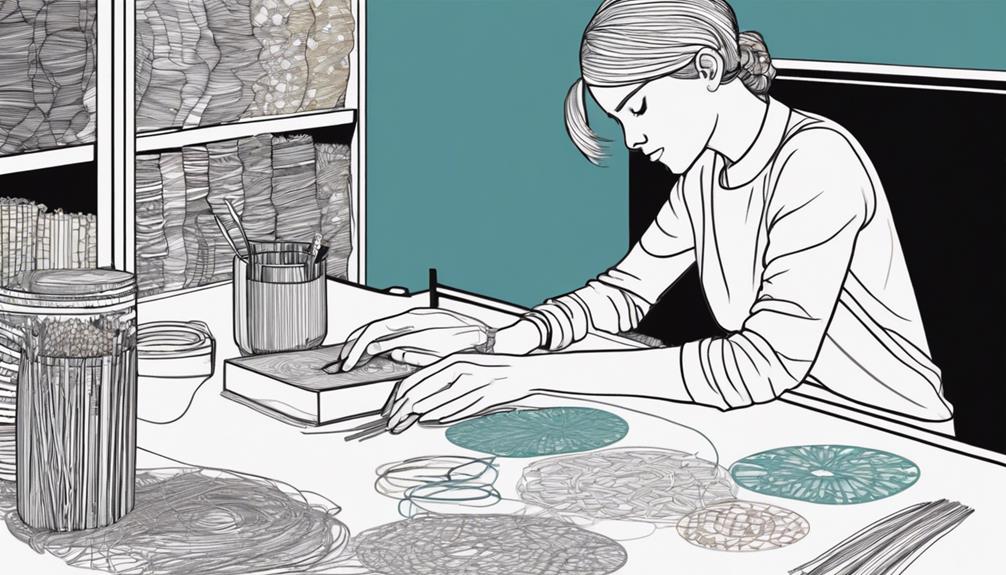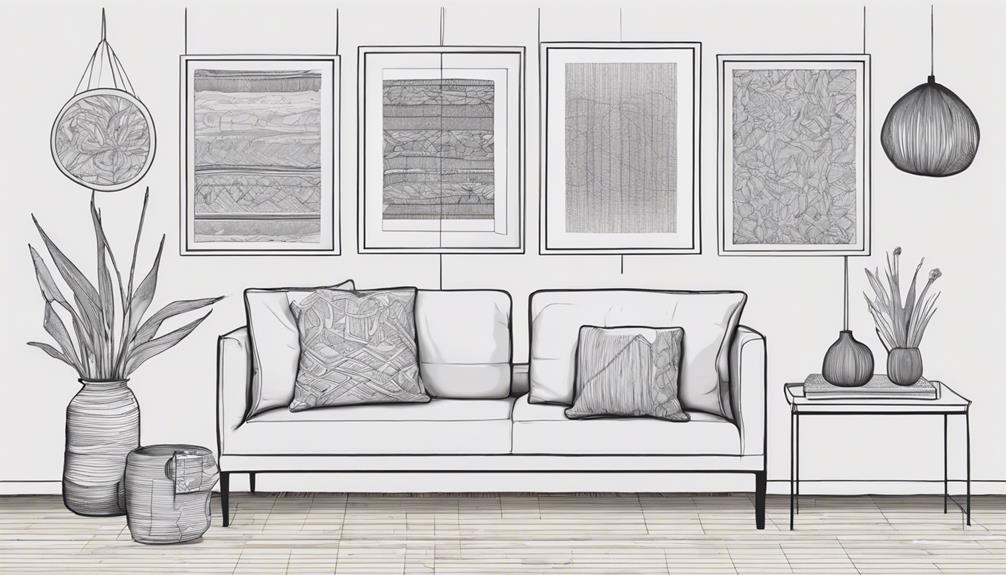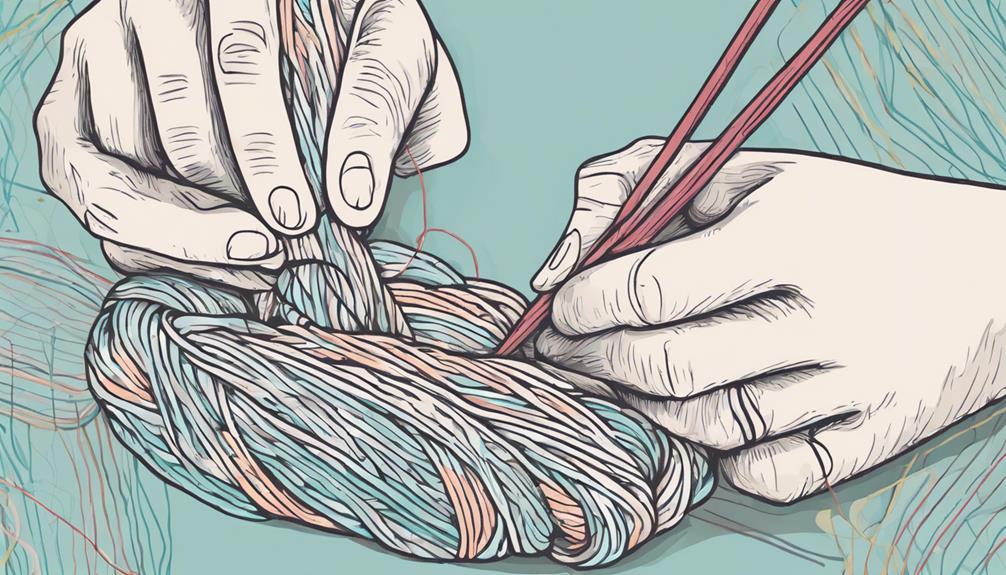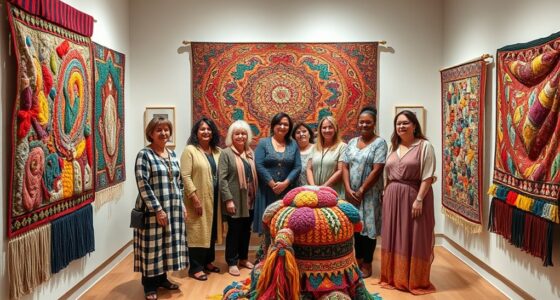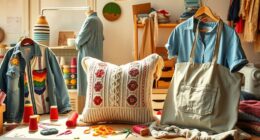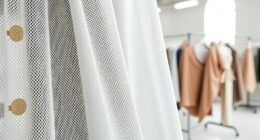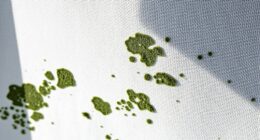Explore the world of textile art! Learn essential skills, tools, color theory, fabric recommendations, detailed instructions, texture, dimension, and decoration techniques. Immerse yourself in the art of fabric design for a truly rewarding experience.
Key Takeaways
- Learn manipulation techniques like pleating and quilting for unique textures.
- Understand color theory to enhance fabric projects with harmonious color schemes.
- Experiment with different fabrics for visual interest and complexity.
- Incorporate embellishments like beads and ribbons for texture and depth.
- Finish and display textile art professionally for longevity and visual appeal.
Fabric Art Techniques Overview
Explore a diverse array of fabric art techniques to enhance your textile creations. Fabric manipulation is a key aspect of textile art, offering endless creative possibilities for artists.
By experimenting with techniques like pleating, smocking, or shibori dyeing, you can create unique textures and patterns that add depth and visual interest to your fabric pieces. These manipulation techniques allow you to transform plain fabrics into dynamic works of art, elevating your textile projects to new heights.
In textile art, the process of fabric manipulation opens up a world of exploration where traditional quilting techniques blend seamlessly with modern mixed media applications. Artists can push the boundaries of creativity by combining different manipulation methods to achieve stunning results.
Whether you're drawn to intricate stitchwork, bold surface designs, or innovative fabric treatments, mastering these techniques will empower you to express your artistic vision and craft truly one-of-a-kind textile creations.
Essential Tools and Supplies
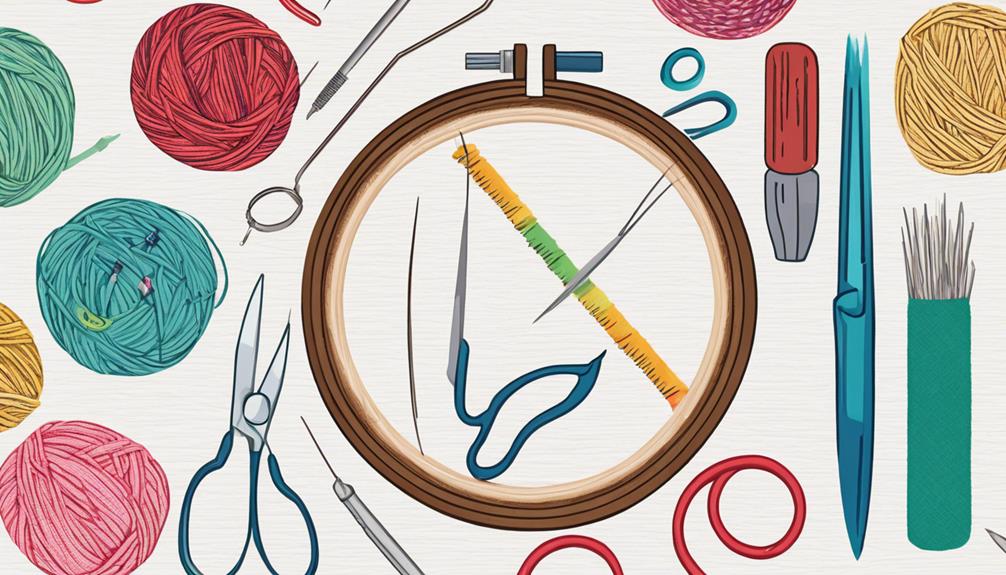
You're about to discover the essential tools and supplies needed for your textile art projects.
From fabric and thread to beads and ribbons, these items will help bring your creative visions to life.
Have everything on the required materials list to guarantee smooth crafting sessions.
Tools for Textile Art
In textile art, having essential tools and supplies is fundamental to creating professional and intricate pieces. To equip yourself for success in your textile art endeavors, you'll need a variety of tools and materials. Here is a list of some important tools and supplies that will help you on your textile art journey:
| Tools | Supplies |
|---|---|
| Sewing machines | Fabric |
| Needles | Threads |
| Scissors | Yarn |
| Cutting mats | Embellishments |
| Rulers | Stabilizers |
| Embroidery hoops | |
| Rotary cutters | |
| Fabric markers |
Each of these tools and supplies plays a vital role in bringing your creative vision to life. Whether you are a novice looking for a complete photo guide or seeking crafty tips and ideas from expert fabric artists, having the right tools will guarantee your textile art projects are executed with precision and finesse.
Required Materials List
To create impactful textile art pieces, ensuring you have the necessary tools and supplies is essential. As a novice or expert fabric artist, having the right materials at your disposal can make a significant difference in the outcome of your projects.
Here are some essential items you'll need:
- Fabric scissors
- Sewing needles
- Cutting mat
- Sewing machine
- Embroidery hoops
These tools are fundamental for cutting, sewing, and embellishing your fabric creations.
Additionally, supplies such as fabric paint, markers, threads, beads, and various fabrics are vital for adding color, texture, and detail to your artwork. Don't forget about other necessary materials like batting, stabilizers, rulers, and templates for precise cutting and measuring.
Specialized tools like fabric markers, rotary cutters, and quilting rulers can also aid in creating intricate designs and patterns.
Essential Supplies Needed
When diving into textile art projects, having necessary tools and supplies on hand is essential for achieving professional results. Essential tools include fabric scissors for precise cutting, rotary cutters for intricate designs, cutting mats for protecting surfaces, sewing machines for efficient stitching, and hand-sewing needles for delicate work.
Basic supplies such as various fabrics, threads in assorted colors, needles for different fabrics, pins for securing pieces, rulers for accurate measurements, marking tools for patterns, and an iron for crisp finishes are crucial for any textile art endeavor.
To enhance your projects, consider using specialized materials like fabric paints to add color and texture, dyes for custom shades, embellishments for unique accents, and stabilizers for added support. Investing in quality tools and supplies ensures precision and durability in your fabric manipulation and embellishment techniques.
Additionally, creating a well-equipped workspace with good lighting and storage solutions can optimize your textile art experience, making it more enjoyable and efficient.
Exploring Color Theory
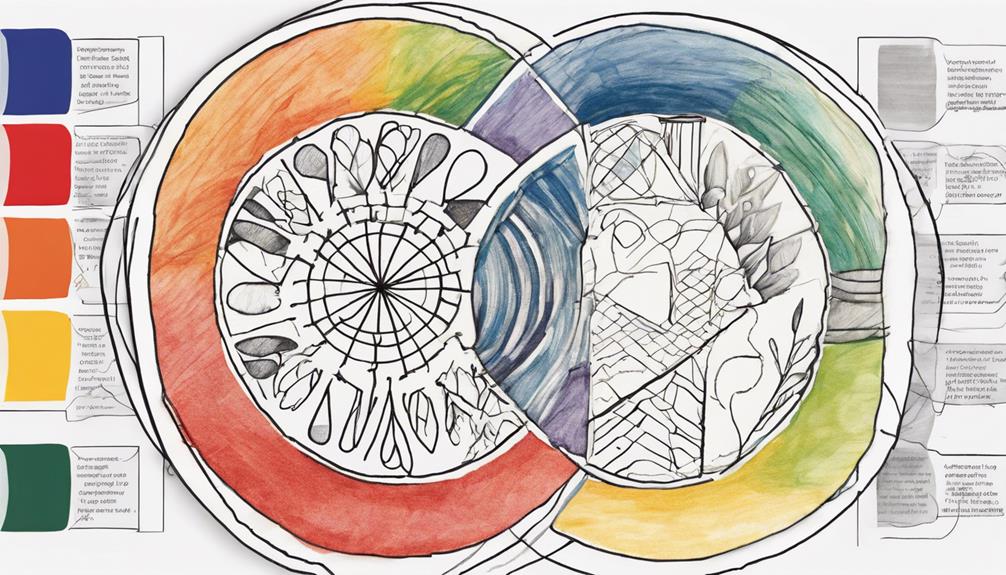
You'll explore Color Theory Basics, learn how to apply the Color Wheel in your projects, and discover valuable Fabric Selection Tips.
Color Theory Basics
Understanding color theory basics is vital for textile artists to create visually captivating fabric art pieces. By grasping the fundamentals of color theory, you can enhance the visual impact of your creations through the strategic use of color schemes and combinations.
Here are some key points to take into account:
- Color theory in textile art involves exploring various color schemes such as complementary, analogous, and triadic to create harmonious compositions.
- Choosing colors that work well together can greatly improve the overall aesthetic appeal of your fabric art projects.
- Understanding color temperature (warm vs. cool tones) and value (lightness or darkness) helps in creating depth and dimension in textile art pieces.
- Color theory guides the selection of fabrics, threads, and embellishments to ensure coherence and unity in your artwork.
- Applying color theory principles can elevate the storytelling aspect of your textile art, making your pieces more compelling and visually captivating.
Color Wheel Application
Exploring the application of the color wheel in textile art enhances your understanding of color relationships and harmonies. The color wheel serves as a valuable reference in color theory, aiding artists in creating harmonious compositions.
By utilizing the primary, secondary, and tertiary colors on the wheel, you can easily identify analogous colors that sit next to each other, providing a pleasing and harmonious palette for your textile projects. Conversely, complementary colors, found opposite each other on the color wheel, offer a striking contrast that can add depth and visual interest to your art pieces.
Understanding how to apply the color wheel in textile art allows you to make informed decisions when selecting hues for your projects. By following the principles of the color wheel, you can create cohesive designs that evoke specific moods and convey your artistic vision effectively.
Experimenting with different color combinations based on the color wheel can elevate your textile art and transform it into visually appealing pieces.
Fabric Selection Tips
To enhance the visual impact of your textile art projects through fabric selection, consider how color theory principles can guide your choices. When selecting fabrics for your projects, here are some tips to keep in mind:
- Understand Color Theory: Familiarize yourself with color schemes and contrasts to create visually appealing textile art.
- Consider Mood and Theme: Choose fabric colors that align with the mood and theme of your project for a cohesive look.
- Experiment with Textures: Play with different fabric textures and weights to add depth and dimension to your textile art creations.
- Mix and Match Fabrics: Mixing various fabrics can add visual interest and complexity to your artwork.
- Create Harmonious Combinations: Use color theory to create harmonious fabric combinations that draw the viewer's eye and evoke emotions in your textile art projects.
Choosing the Right Fabrics
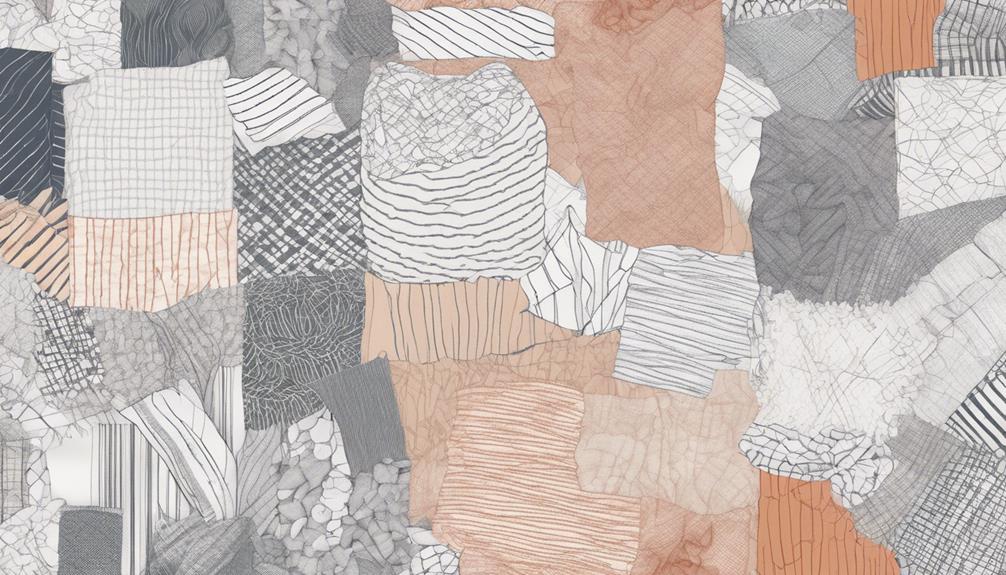
When selecting fabrics for your textile art projects, it's essential to take into account the texture, weight, and weave of each material.
Natural fibers such as cotton, linen, and silk are popular choices in fabric art due to their versatility and ability to absorb dyes effectively. These fibers offer a range of textures and weights, allowing for diverse creative expressions.
On the other hand, synthetic fabrics like polyester and nylon provide durability and unique textures that can add an experimental edge to your textile creations.
For a sustainable and distinctive approach to fabric art, consider using vintage or upcycled fabrics. These materials not only add character to your pieces but also contribute to a more eco-friendly practice.
Additionally, mixing different fabrics within a project can create visual interest and dynamic textures, enhancing the overall aesthetic of your textile art.
Experimenting with various fabric combinations opens up endless creative possibilities for your artistic endeavors.
Step-by-Step Instructions
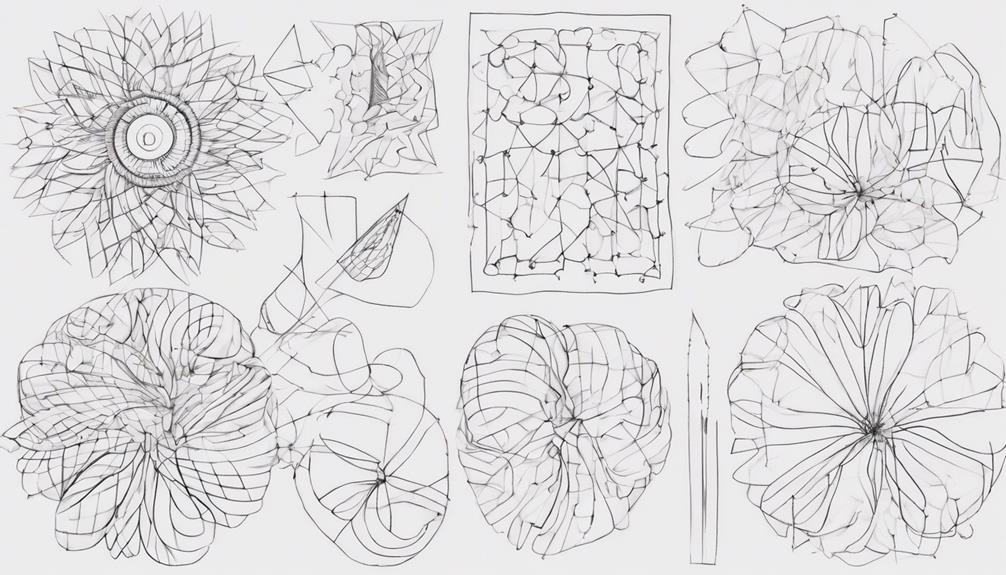
Plunge into the complex world of textile art with the detailed step-by-step instructions provided in The Complete Photo Guide to Textile Art. This all-encompassing guide by renowned fabric artist Susan Stein offers a wealth of knowledge and expertise to help you master the art of textile manipulation techniques.
Here's what you can expect from the guide:
- Clear and concise step-by-step instructions for various fabric art projects.
- Detailed explanations of different textile manipulation techniques such as pleating, smocking, and quilting.
- Inspiring artist galleries showcasing colorful photos for creative ideas and motivation.
- A how-to reference book that caters to both beginners and experienced textile artists.
- Positive reviews from reputable sources like Cloth Paper Scissors praising the book's quality and usefulness.
With this guide in hand, you'll be well-equipped to commence on your textile art journey with confidence and creativity.
Creating Texture and Dimension
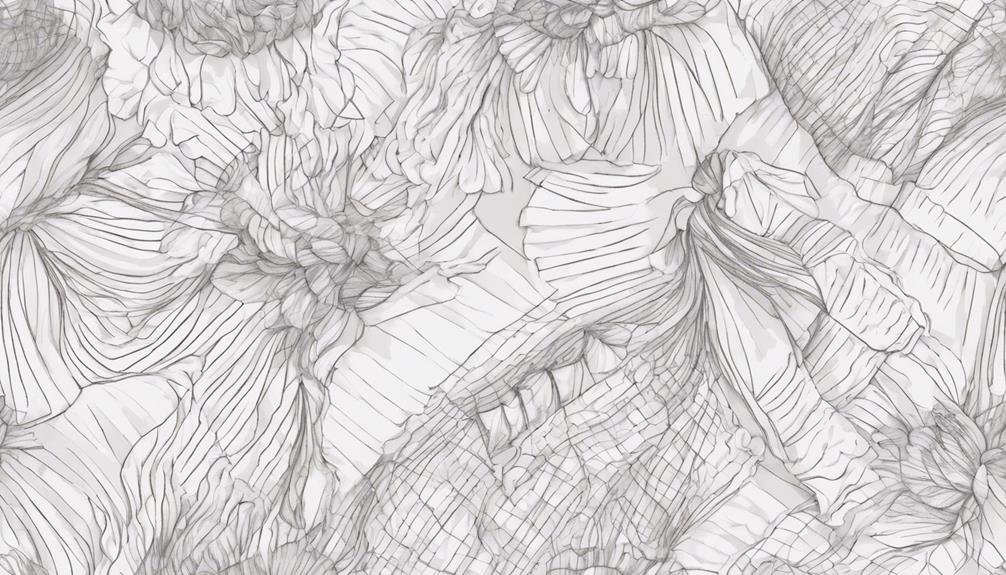
Enhance your textile art pieces by incorporating various techniques to create texture and dimension. Experiment with fabric manipulation techniques such as smocking, pleating, and gathering to add interesting textures and shapes to your artwork.
Utilize different fabrics, threads, and materials to layer and create depth, enhancing the tactile quality of your fabric art. Consider incorporating quilting, appliqué, embroidery, and stitching patterns to further enrich the dimension of your pieces.
To bring a dynamic and interactive quality to your textile creations, think about adding three-dimensional elements like beads, buttons, and ribbons. These embellishments can not only enhance the visual appeal but also provide a unique sensory experience for the viewer.
Attend a fabric art workshop to learn new techniques and gain inspiration for incorporating texture and dimension into your pieces. By playing with these various methods, you can create textile art that isn't only visually engaging but also stimulating to touch and explore.
Adding Embellishments
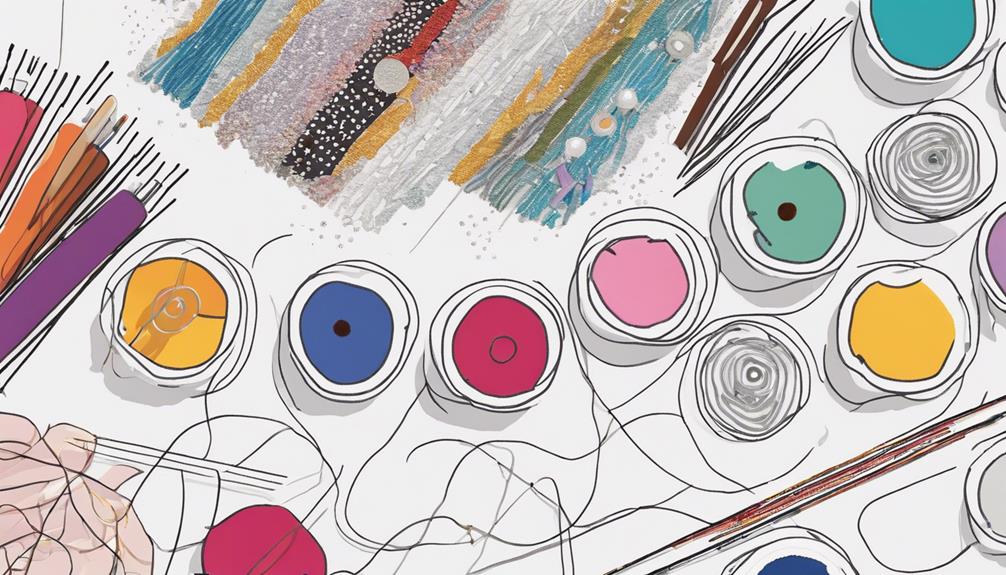
To elevate your textile art pieces, consider incorporating a variety of decorative elements known as embellishments, such as beads, sequins, and embroidery stitches. Adding embellishments to fabric art can truly enhance the overall look and feel of your creations.
Here are some tips to help you master the art of embellishing your textile pieces:
- Experiment with different techniques: Try out appliqué, fabric painting, or fabric manipulation to discover what suits your style best.
- Mix and match materials: Incorporate beads, ribbons, yarn, and other unique materials to add depth and visual interest to your fabric creations.
- Personalize your work: By incorporating various embellishment techniques, you can add a personalized touch to your textile art projects.
- Enhance texture and visual appeal: Embellishments can help you create texture and dimension in your fabric pieces, making them visually stunning.
- Add unique touches: Don't be afraid to get creative and experiment with different embellishment methods to make your textile creations stand out.
Finishing and Displaying Your Art
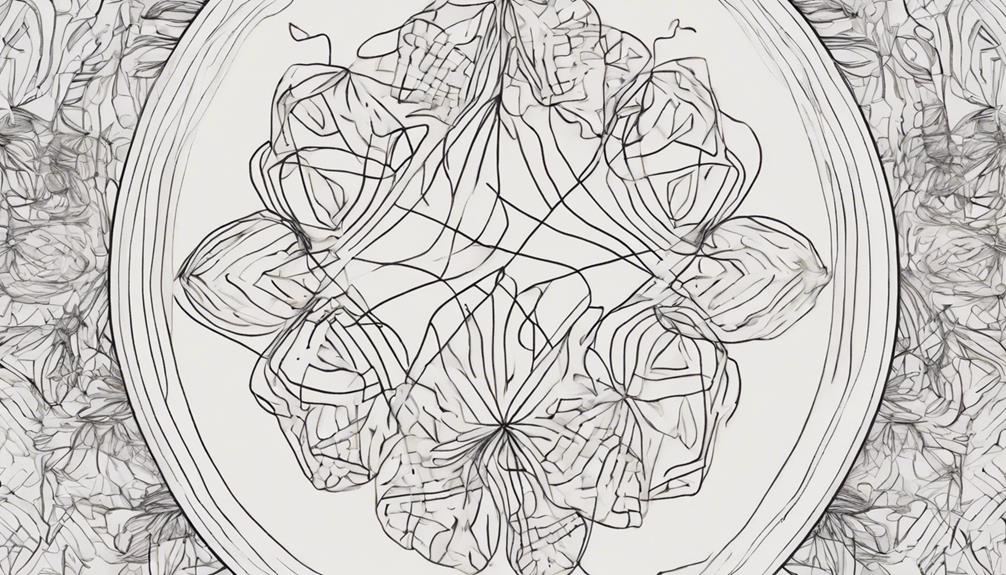
Consider mounting your textile art on a canvas or stretcher bars for a polished presentation. Utilizing a fabric backing or frame will provide stability and longevity to your artwork. When displaying your textile art, opt for a well-lit area to highlight the colors and textures of the fabric. Experiment with various hanging methods like rods, clips, or hooks to determine the most suitable way to showcase your textile art. Additionally, rotating your displays periodically can help prevent fading and maintain a fresh and dynamic look in your space.
| Fabric Backing | Canvas Mounting | Textile Art Display |
|---|---|---|
| Provides stability | Offers a professional finish | Enhances colors and textures |
Inspiration and Further Resources
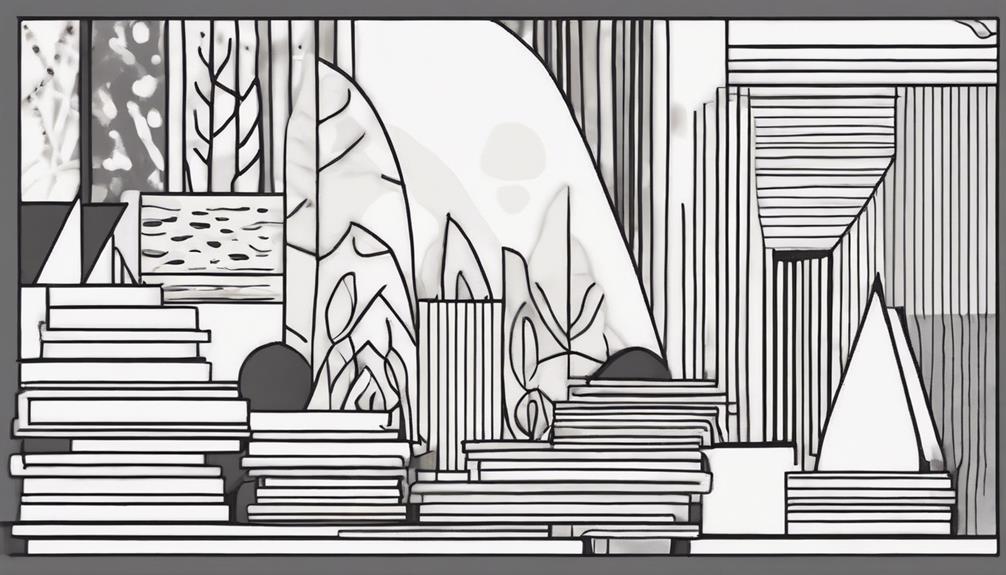
Discover a wealth of inspiration and valuable resources in 'The Complete Photo Guide to Textile Art' by Susan Stein, a book that will spark your creativity and broaden your knowledge of textile art techniques.
Immerse yourself in artist galleries featured in the book to fuel your creativity and witness the varied applications of fabric art manipulation.
The step-by-step instructions, accompanied by vibrant photos, offer a clear understanding of various techniques, making it simpler for you to experiment and refine your skills.
This all-encompassing reference serves as a valuable tool for both beginners and seasoned artists looking to explore further into the world of textile art. With glowing reviews from publications like Cloth Paper Scissors, you can rely on the quality and usefulness of this book within the textile art community.
- Gain inspiration from artist galleries
- Learn fabric art manipulation techniques
- Access step-by-step instructions with colorful photos
- Use the book as a comprehensive reference
- Benefit from positive reviews in the textile art community
Frequently Asked Questions
How Do You Do Textile Art?
To do textile art, you explore fabric, fibers, and materials creatively. Techniques like quilting, weaving, and embroidery come into play. Artists use tools and methods to transform textiles into unique pieces.
Your vision guides whether the art is functional, decorative, or purely artistic. Textile art offers a broad range of creative expression, from traditional to contemporary styles, allowing you to experiment and showcase your creativity in various ways.
What Is the Textile Art Technique?
Textile art technique involves altering and embellishing fabric to create unique designs. Artists use various methods like dyeing, printing, stitching, quilting, and appliqué to express creativity.
Materials such as fabric, thread, yarn, beads, and found objects are utilized for experimentation with textures, colors, and patterns. The versatility of textile art allows for making clothing, accessories, home décor, and fine art pieces, showcasing a wide range of artistic possibilities.
What Is the Difference Between Fiber Art and Textile Art?
When distinguishing between fiber art and textile art, remember that fiber art often emphasizes the materials themselves, while textile art involves manipulating fabrics and fibers for design.
Both can be functional or decorative, blending tradition with modern creativity. Textile art encompasses a wider range of techniques like sewing, quilting, and dyeing, while fiber art may focus more on exploring textures and properties of the materials.
Explore and experiment to find your artistic voice in this diverse field.
What Are the Parts of a Textile Art?
To create textile art, you'll need fabric, thread, yarn, and various materials. Your piece may incorporate different fabrics like cotton, silk, wool, or blends.
Enhance your work with beads, sequins, buttons, or embroidery threads. Techniques like dyeing, printing, stitching, quilting, weaving, and felting are key.
Layers, textures, patterns, and colors come together to make your textile art visually enchanting and tactile.
Conclusion
Now that you've mastered the basics of textile art, the possibilities are endless. With the right tools and techniques, you can bring your creative visions to life on fabric canvas.
Remember, art isn't just about the end result, but the journey of exploration and self-expression. So grab your supplies, let your imagination run wild, and create your own masterpiece that will leave a lasting impact.
Happy creating!

